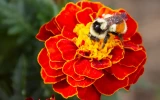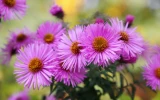Is Flower Farming Profitable? How Much Can You Make?
Flower farming is more than just an aesthetic pursuit—it's a potential business venture with varying degrees of profitability. Profits from flower farming can change a lot based on what flowers you decide to grow, who you're selling them to, and how you handle your spending. In this article, we'll break down the numbers and show you the ways you can make money by farming flowers.
Flower farming can indeed be profitable. Large-scale flower farms have reported making a comfortable living, with revenues reaching over $250,000 annually. On a smaller scale, intensive production techniques have allowed smaller farms to gross between $55,000 to $60,000 per acre in good years.
In flower farming, keeping costs low is key to your success. Consider planting high-profit flower crops like sunflowers and zinnias that are less costly because they grow from seed. As you read further, you'll find out which flower types can give the greatest returns per acre.
Summary
- Initial investment in land is a significant factor in the cost of establishing a flower farm, with the price per acre varying greatly from $1,000 to upwards of $17,500.
- Peonies and orchids can have particularly high-profit returns of $20,000 - $100,000 and $25,000 - $200,000 respectively, due to their popularity for weddings and other high-end events, but they also require significant investment and expertise to grow successfully.
- Flower farming offers various revenue streams including fresh cut flowers, dried flowers, floral arrangements, value-added products, on-farm events, workshops, and agritourism activities which can potentially boost profitability and create multiple sources of income.
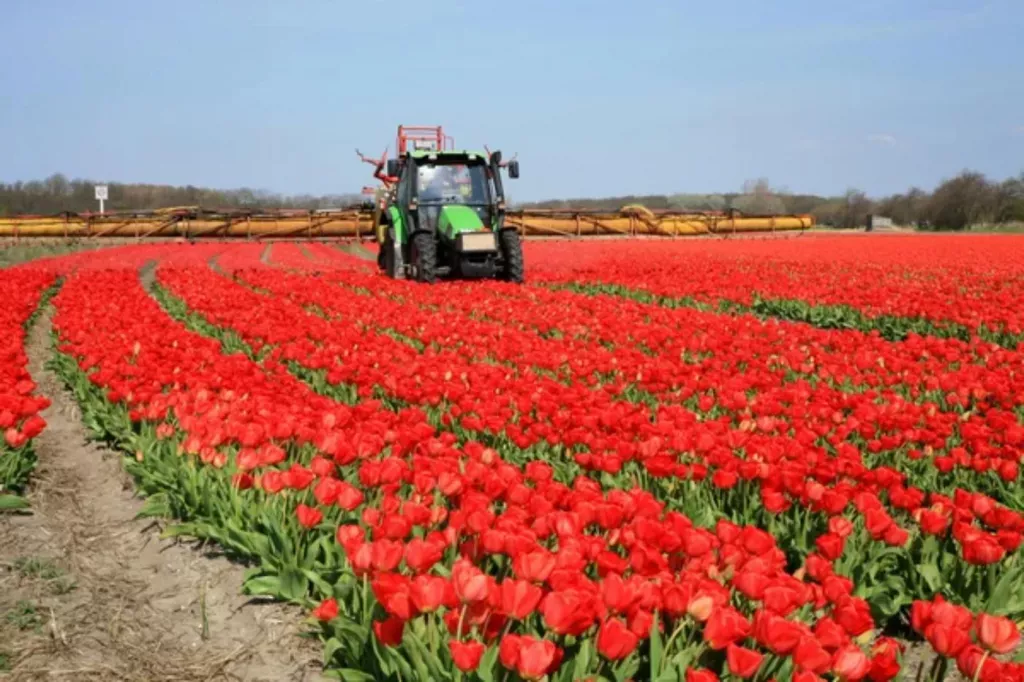
On this page:
Flower Farming: Cost Breakdown and Analysis
When diving into the economics of flower farming, it's crucial to understand the costs involved. Here's a simple yet detailed breakdown for your analysis:
Initial investment to establish a flower farm
| Initial Investment | Estimated Cost Range |
|---|---|
| Land | $1,000 - $17,500 per acre |
| Equipment | $500 - $5,000+ |
| Seeds or bulbs | $100 - $1,000+ |
| Estimated total | $1600 - $23,500+ |
The cost of land depends on location and size
The cost of land will depend heavily on the location and size of the plot you're considering. It can be as low as $1,000 per acre in some regions to an average of around $17,500 per acre in the United States.
The price of agricultural land can differ dramatically from one region to another. In areas where land is in high demand, either for residential development or because of its proximity to large markets, prices tend to be higher.
For example, farmland near urban centers or in regions known for fertile soil and favorable farming conditions will generally command premium prices. Conversely, land in more remote or less fertile areas may be more affordable.
The size of the land you're looking to purchase will also impact the cost. Larger plots typically have a higher total price due to their increased acreage, although the price per acre may decrease as the size of the land increases due to economies of scale.
Smaller plots, especially those that are more manageable for small-scale farming operations, may have a higher price per acre but a lower total cost.

In addition to location and size, other factors can influence the cost of land for a flower farm, including:
-
Soil quality: Land with rich, fertile soil that's well-suited for growing flowers may be more expensive, as it can yield better crops and require less investment in soil amendments.
-
Water access: An adequate water supply is critical for flower farming. Properties with established irrigation systems or reliable natural water sources may be pricier than those without.
-
Infrastructure: The presence of necessary infrastructure, such as greenhouses, storage facilities, and transport links, can add to the land's value.
-
Zoning and regulations: Zoning laws and agricultural regulations can affect land use and value. Land that is zoned for agriculture may be less expensive than land zoned for residential or commercial use, but it may also come with restrictions that could affect your farming operations.
The cost of buying basic equipment
Starting a flower farm requires an investment in various types of equipment, and the costs can vary widely depending on the quality, brand, and scale of the operation.
-
Trowels: These are basic hand tools for digging, applying, smoothing, or moving small amounts of soil. They are relatively inexpensive and essential for planting and weeding tasks. A high-quality, durable trowel can cost anywhere from $10 to $30.
-
Pruning shears: Pruners are crucial for maintaining the health of your flowers by trimming and shaping plants. Simple hand pruners can cost around $18 to $20, while more professional-grade pruners, like the ARS 7-Inch Bypass Pruner Red, are available for approximately $39.99.
-
Irrigation systems: The cost of an irrigation system for a flower farm can be one of the more significant investments, especially if you are setting up a large-scale operation. The expense can range from a few hundred dollars for a simple drip or sprinkler system to thousands of dollars for a more sophisticated setup with timers, filters, and automated controls.
The cost of purchasing seeds or bulbs
When opting for high-profit flower crops like sunflowers, zinnias, and celosia, you might need to consider both the initial cost and the potential return on investment.
- Sunflowers are a popular choice for flower farmers due to their large, showy blooms and relatively easy cultivation. The cost of sunflower seeds can vary depending on the variety and whether the seeds are organic or have been treated. It's worth noting that some sunflower varieties are single-stem, meaning each seed will only produce one flower, which may affect planting density and overall yield.
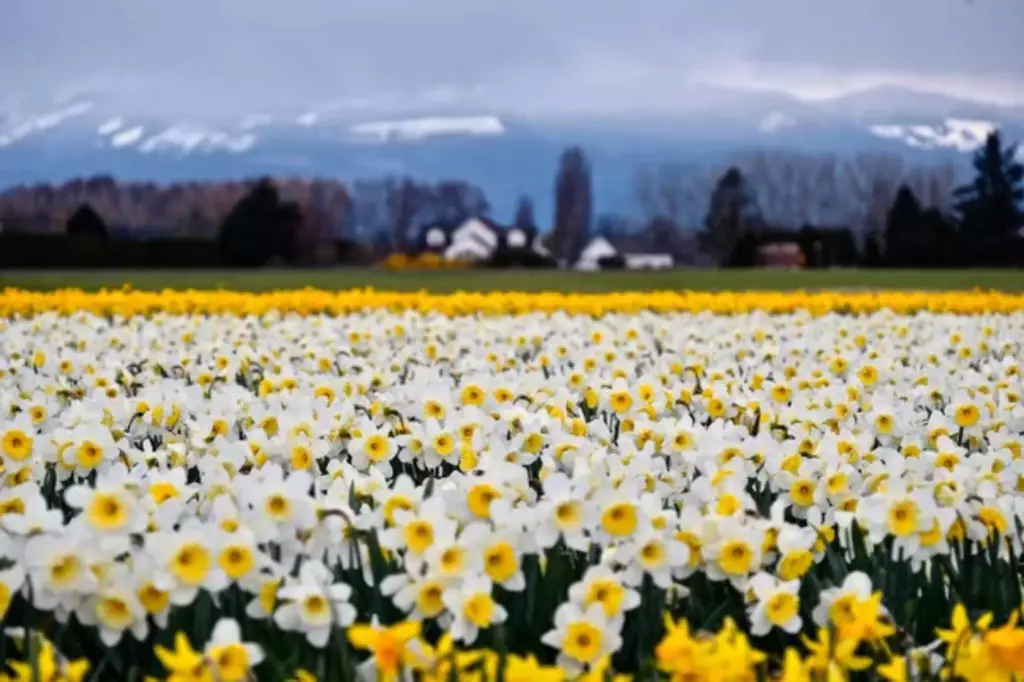
-
Zinnias are another workhorse of the cut flower industry, known for their vibrant colors and long vase life. The cost of zinnia seeds is usually quite affordable, with a packet of seeds often costing under $10. For example, a mix like the 'Queen Mix' might be priced at around $5.40 for 50 seeds.
-
Celosia is yet another high-profit crop with dramatic plumes and a variety of colors. The cost for celosia seeds can be similar to that of zinnias, but it can also depend on the specific variety and whether the seeds are from a specialty breeder.
When planning for seed or bulb costs, flower farmers must also consider the potential profitability of these crops. Factors such as the local market demand, the length of the growing season, and the farm's ability to sell directly to consumers or through local florists and markets will influence the overall profitability.
Recurring expenses to maintain a flower farm
| Recurring Expenses | Estimated Annual Cost Range |
|---|---|
| Fertilizers | $200 - $2,000+ |
| Pest control | $100 - $1,000+ |
| Labor | $10,000 - $50,000+ |
| Equipment maintenance | $500 - $5,000+ |
| Irrigation | $1,000 - $10,000+ |
| Packaging | $500 - $4,000+ |
The cost of fertilizers for a flower farm
The cost of fertilizers for a flower farm can vary significantly based on the choice between natural and chemical options. Synthetic fertilizers generally cost between $25 and $80.
On the other hand, natural fertilizers are more expensive. Organic fertilizers may cost significantly more than conventional fertilizers because they are less concentrated and supply fewer nutrients pound for pound.
The cost of implementing pest control
Organic pest control methods, which utilize natural and environmentally friendly techniques, may have different cost implications compared to traditional chemical-based approaches.
Organic pest control methods often involve the use of beneficial insects, traps, and natural repellents, which can impact the overall cost of implementation.
On the other hand, traditional pest control methods typically involve the use of chemical pesticides and insecticides. The cost of traditional pest control can vary based on the type and quantity of chemicals required, as well as any additional equipment or labor needed for application.
Larger farms may require more extensive pest control measures, leading to higher overall costs. Conversely, smaller farms may have lower pest control expenses, but the relative impact on the overall budget could be similar.
The cost of labor in a flower farm varies
The scale of the operation is a key determinant of labor costs, as larger farms typically require more workers to handle the increased workload.
Additionally, local wage rates play a crucial role in determining labor costs, as higher wages in a particular region will naturally result in higher overall labor expenses for the flower farm.
The specific tasks required on the flower farm also impact labor costs. For example, tasks such as planting, watering, weeding, pest control, harvesting, and packaging all require varying levels of labor input. Some of these tasks may be more time-consuming or labor-intensive, leading to higher labor costs for the farm.
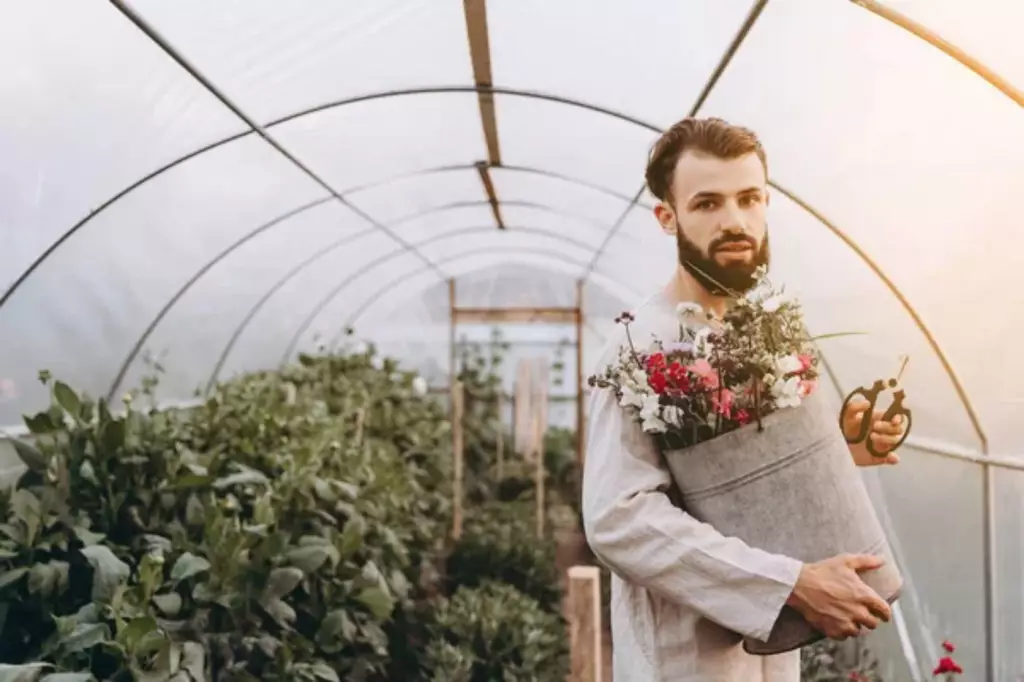
In addition to the direct costs of labor, flower farms must also consider indirect labor expenses such as employee benefits, insurance, and payroll taxes. These additional costs can significantly impact the overall labor expenses for the farm.
To effectively manage labor costs, flower farm operators often seek to optimize their workforce by implementing efficient labor management practices.
This may involve streamlining workflows, utilizing labor-saving technologies and equipment, and carefully planning work schedules to maximize productivity while minimizing labor hours.
The cost of maintaining equipment
Regular maintenance of equipment such as tractors, plows, tillers, mowers, and other specialized machinery is essential to ensure its longevity and optimal functioning.
Maintenance may include oil changes, replacing worn parts, sharpening blades, and ensuring that all machinery is clean and stored properly to prevent rust and deterioration.
Costs of setting up irrigation
Flowers require an adequate and consistent water supply to thrive. Options for irrigation systems range from simple overhead sprinklers to more sophisticated drip or micro-spray irrigation systems that conserve water and target the roots directly, minimizing waste and preventing fungal diseases that can occur with excessive moisture on the plants.
Costs of packaging
Once flowers are harvested, they need to be packaged appropriately for transport and sale. Packaging serves several purposes: it protects the flowers from damage during handling and shipping, extends their shelf life, and presents them attractively to customers.
Common packaging materials for flowers include sleeves, wraps, boxes, and buckets, which may vary depending on the type of flowers and the distance they need to travel.
Revenue Streams in Flower Farming
Below is a table that estimates the potential range of revenue one might expect from various revenue streams in flower farming.
| Revenue Stream | Estimated Revenue Range (Annual) |
|---|---|
| Fresh cut flowers | $10,000 - $100,000+ |
| Dried flowers | $5,000 - $50,000+ |
| Floral arrangements | $20,000 - $200,000+ |
| Value-added products | $5,000 - $75,000+ |
| On-farm events | $3,000 - $50,000+ |
| Workshops | $2,000 - $30,000+ |
| Agritourism activities | $10,000 - $100,000+ |
Profit from selling fresh cut flowers
You can gain profit from selling fresh cut flowers to the following:
-
Wholesale market: Farmers can sell fresh flowers in bulk to wholesalers who then distribute them to retailers, florists, and supermarkets.
-
Direct retail: Selling directly to customers through farmers' markets, roadside stands, or online platforms allows farmers to retain more profit.
-
Florists and event planners: Establishing relationships with local florists and event planners can secure regular orders for weddings, funerals, and other events.
-
Subscription services: Offering a subscription service where customers receive a fresh bouquet weekly or monthly can provide a steady income.
Profit from marketing the use of dried flowers
Dried flowers have a longer shelf life and can be sold throughout the year, even when fresh flowers are out of season. They can be easily packaged and shipped, making them ideal for online sales.
Dried flowers are also popular in the craft market for use in arrangements, wreaths, and other decorative items.
Profit from doing floral arrangements
Creating custom floral arrangements for events, businesses, or personal use adds value to the basic product. You can also offer workshops on how to create floral arrangements to attract customers interested in DIY and can also be a source of income.
Profit from value-added products:
- Essential oils: Certain flower varieties can be processed to extract essential oils, which are high-value products used in aromatherapy, cosmetics, and perfumery.
- Dried flower crafts: Crafting items such as bookmarks, candles, or soaps with embedded dried flowers can attract customers looking for unique and artisanal products.
- Edible flowers: Some flowers are edible and can be marketed to restaurants, bakeries, and gourmet food stores.
Profit from on-farm events
- Weddings and celebrations: Renting out space for weddings or other celebrations can be highly profitable, especially if the farm provides a picturesque setting.
- Workshops and classes: Hosting workshops on gardening, flower arranging, or sustainable farming practices can attract enthusiasts willing to pay for the experience and knowledge.
- Farm tours: Guided tours that educate visitors about flower farming can also include opportunities to pick their own flowers, adding to the overall experience.
Profit from agritourism activities
- Pick-your-own flowers: Allowing visitors to pick their own flowers can be a fun activity that also generates revenue.
- Seasonal events: Hosting seasonal events such as tulip festivals in the spring or sunflower mazes in the fall can draw large crowds.
- Photography sessions: Renting out the farm as a location for photography, such as engagement or family photoshoots, can be an additional revenue stream.
You can learn about agrotourism and other tips to make more money from a small farm when you read this article.
Flower Farming Profit per Acre
To assess the profitability of flower farming, you need to consider both initial investments and ongoing expenses against your revenue streams.
From the given data above, let's assume that the estimated revenue from an acre of fresh flowers is $100,000 and the estimated initial investment is $23,500, and recurring expenses are $53,000 annually, we can calculate the net profit and profit margin as follows:
- Total expenses for the first year: Initial investment + Recurring expenses
- Net profit = Estimated revenue - Total expenses
- Net profit= $100,000 - $23,500 - $53,000
Net profit = $23,500
To calculate the profit margin, you can use the following formula:
- Profit margin = (Net profit / Estimated revenue) * 100
- Profit margin = ($23,500 / $100,000) * 100
Profit margin = 23.5%
So, the possible net profit is $23,500 and the profit margin is 23.5%.
Flower farming can be profitable for beginners
Flower farming can indeed be profitable for beginners, as indicated by the sample calculation. The net profit of $23,500 with a profit margin of 23.5% demonstrates that under the given conditions of using the highest estimated revenue and costs, flower farming can yield a substantial return on investment.
However, you should note that the profitability of flower farming can vary depending on a multitude of factors such as location, market demand, competition, and the specific types of flowers being grown.
The profit margin of 23.5% is a healthy margin in many industries, but for an individual considering entering flower farming, it is critical to conduct a detailed business plan with realistic revenue and expense projections specific to their situation.
They should also consider their own financial situation, risk tolerance, and farming expertise before making a decision. It is advisable to start with thorough market research, a solid business plan, and possibly consultation with experienced farmers or agricultural experts.
For beginners, there may be a learning curve that could affect both revenue and costs. Beginners may have lower yields or encounter more issues that could increase costs until they gain more experience.

Most profitable flower farm based on flower type
The table below shows some of the most profitable flowers that farmers often choose to cultivate:
| Flower Type | **Estimated Profit Range (Per Acre)*** |
|---|---|
| Roses | $20,000 - $30,000 |
| Tulips | $10,000 - $17,000 |
| Lilies | $15,000 - $22,000 |
| Peonies | $20,000 - $100,000** |
| Orchids | $25,000 - $200,000** |
| Lavender | $3,500 - $8,000 |
| Hydrangeas | $7,000 - $10,000 |
| Hostas | $2,500 - $5,000 |
| Daylilies | $4,500 - $10,000 |
| Daffodils | $3,000 - $9,000 |
| Sunflowers | $500 - $1,200 |
-
Roses: Roses are one of the most popular cut flowers globally and are in high demand for occasions like weddings, Valentine's Day, and Mother's Day. They come in various colors and can fetch a high price, especially for unique and long-lasting varieties.
-
Tulips: With a wide range of colors and shapes, tulips are popular in spring and have a significant market, particularly around Easter and Mother's Day.
-
Lilies: Lilies are valued for their large, fragrant blooms and are commonly used in bouquets and arrangements. Oriental and Asiatic lilies are particularly popular.
-
Peonies: Peonies have a relatively short blooming season, which can drive up their price. They are highly sought after for weddings and special events.
-
Orchids: Exotic and long-lasting, orchids can be very profitable, especially if growers specialize in unique varieties. They require specific growing conditions but can command a high price in the market.
-
Lavender: Easy to grow and with a variety of uses, lavender can be sold fresh or dried and is popular in bouquets, sachets, and homemade products. It is also considered to be one of the ultimate known cash crops.
-
Hydrangeas: With their large blooms and variety of colors, hydrangeas are popular both fresh and dried. They can retain their color and shape for a long time when dried properly.
-
Hostas: These shade-loving plants are primarily grown for their foliage, but they also produce flowers. They are easy to propagate and can be a profitable perennial crop.
-
Daylilies: Daylilies are hardy and come in a wide range of colors. They have a long blooming season and can be sold as bare-root divisions or potted plants.
-
Daffodils: Daffodils are one of the first flowers to bloom in spring and are often in high demand for early spring bouquets. They are relatively low maintenance and can be a profitable option for flower farmers.
-
Sunflowers: With their bright, cheerful blooms, sunflowers are popular for both cut flower arrangements and oil production. They can be a profitable specialty crop, especially for those who offer pick-your-own options or agri-tourism experiences.
